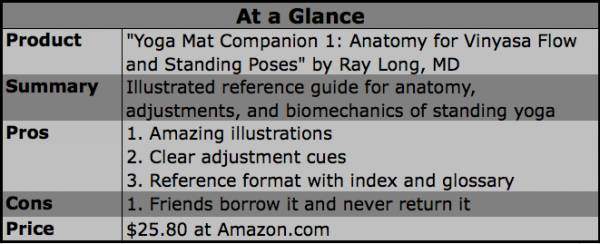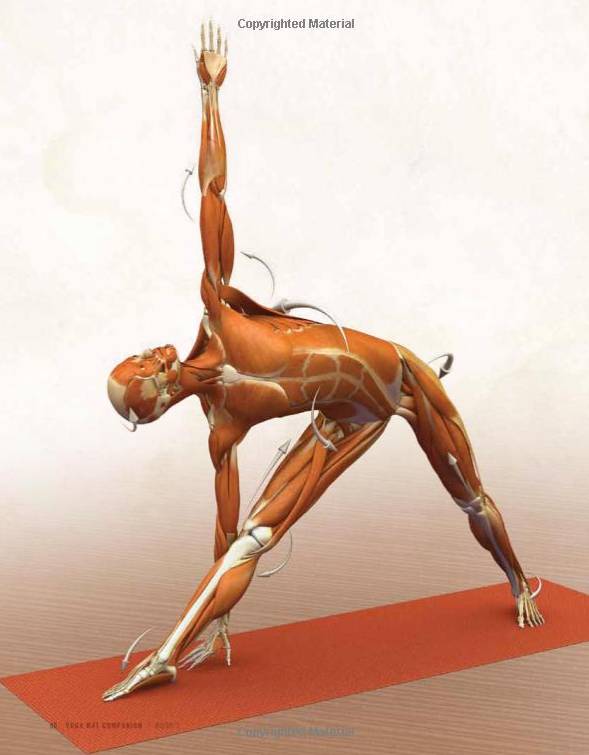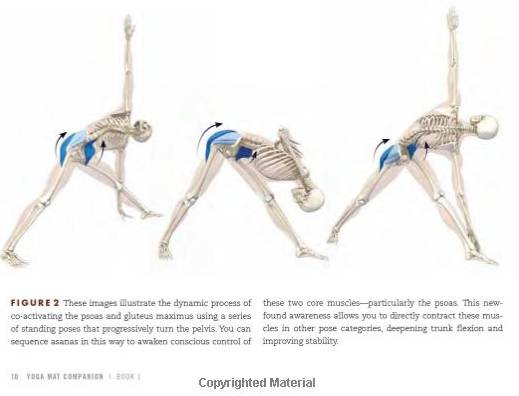

I was first introduced to the work of Ray Long through his book The Key Muscles of Yoga, which I read and then reread when it was required during a yoga teacher certification course I took part in. From there, I discovered his Yoga Mat Companion series. The first volume, Yoga Mat Companion 1: Anatomy for Vinyasa Flow and Standing Poses is everything you’d expect from an orthopedic surgeon who practices and teaches yoga. Diving into the anatomical details of yoga postures can only enhance your experience of their practice. And even if you don’t practice yoga, you can still find amazing info and visuals on musculoskeletal anatomy. This volume of the Yoga Mat Companion series has been one of the primary resources to which I keep returning to enhance and develop not only my own practice but also my skills as a yoga instructor.
Each pose is covered in detail in about six to eight pages of illustrations and detailed cues that inspire beginners to give it a try and encourage the more seasoned practitioner to refine each pose by the most subtle of adjustments. It’s not uncommon for me to read six pages and then stop because I need to absorb what I just read for a few days or because I immediately feel excited to try out the pose I just read about.
Along with the main section covering each standing pose in detail, some bonuses of the Yoga Mat Companion series include the Key Concepts section, Bone and Muscle Anatomy Index, and Glossary of Terms. If you are newer to yoga, the Key Concepts section alone is worth the price of the book, covering isometric isolation, muscle co-activation, bandhas, and reciprocal inhibition, among other topics.

Another convenient feature is the way the author explains cues that are often given in a yoga class setting that might be confusing if you don’t already understand them. How do you “hug the knee joint” in triangle pose? Or “wring out your arms?” Or “scrub your foot?” If you need to engage your accessory muscles to deep breathing and you’ve never done that before, what are some clear and practical instructions to make that happen? Here, we, the readers, are given more direct adjustments that we can use to accomplish these ends. As a yoga teacher who instructs primarily in a one-on-one setting, I often need to explain adjustments to students in more than one way until it clicks for them, or in a way that is accessible for them. Cueing someone to “engage your abductors” while in downward dog might not work directly, but instructing that same student to drag her feet away from one another is a little more clear and accomplishes the same purpose.
This is probably not the type of book you would read from beginning to end over the course of a short period of time, but rather you would find the pose you’d like to refine and study that one section for a few weeks. Nonetheless, the book is arranged in sequential order in terms of how you might arrange the poses in your practice. I spent about six months working my way through this volume, but only because I spent time practicing each pose after reading about it. You could certainly read straight through the book in a few days and still gain plenty of useful tidbits, I just wouldn’t recommend it that way.
If you really wanted to find something negative to critique about this book, you probably could say that the writing style is a bit dry. But it’s not meant to be a page turner. It’s meant to be a reference book that you can keep coming back to and mull over single sentences until you really understand what they mean.
Mr. Long also has a great blog that I read at Daily Bandha. There you’ll find plenty of free material and useful info with graphics, videos, and illustrations even more detailed than in his books.
“Yoga Mat Companion 1: Anatomy for Vinyasa Flow and Standing Poses” is available for $25.80 at Amazon.com.






